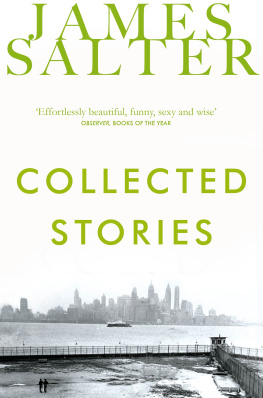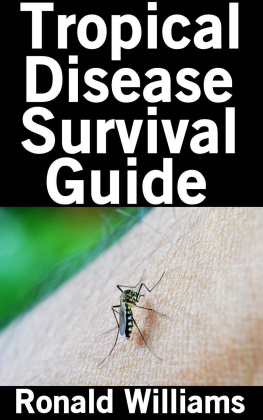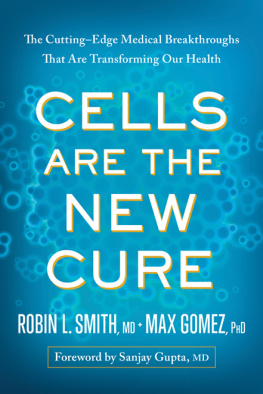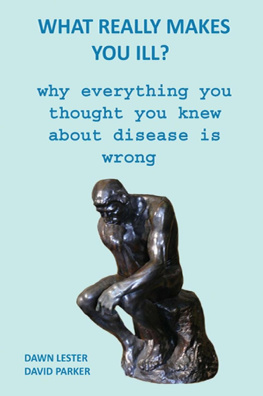science is beautiful
DISEASE AND MEDICINE

Cryptococcus fungi (scanning electron micrograph)
This false-colour image shows several cells of Cryptococcus neoformans, a yeast-like fungus. The cells are covered in a protective casing (here in green), which preserves them until conditions are favourable for their activation. The fungi are deposited in the soil via pigeon droppings, and humans inhale them when the spores become airborne. The disease that they cause, cryptococcosis, is potentially fatal to those with damaged immune systems. It is often an indication of the development of AIDS in patients.
(Magnification x4800 at 6cm wide)
science is beautiful
disease and medicine
UNDER THE MICROSCOPE
Colin Salter

Contents

Cocaine crystals (scanning electron micrograph)
Indigenous South Americans had been chewing the leaves of the coca plant medicinally and recreationally for a thousand years before cocaine was isolated in a German laboratory in 1855. Now cocaine is the second most widely used illicit drug in the world after cannabis. It has a medical application as a local or topical anaesthetic for eye, nose and mouth surgery, although its function is often replaced nowadays by less toxic drugs.
(Magnification unknown)
Introduction
In the first book in this series, Science Is Beautiful: The Human Body Under The Microscope, we looked in close-up detail at how the body works. We live in bodies which are masterpieces of complex machinery, a network of interacting, finely tuned systems which in normal use work so well that we dont even have to think about their operation. Our lungs breathe, our hearts beat, our faces crease with sadness or laughter, without any conscious instruction from us, the machines owner-occupiers.
In this book were turning our attention to what happens when things go wrong. Specifically we are looking at how bacteria, viruses and other disruptive forces manage to outwit the sophisticated defence mechanisms of our immune system. We look too at how science fights back, counter-attacking the invading diseases with ingenious medicines to prevent or cure disease. Remarkably, disease itself can sometimes be harnessed in the service of health. Doctors may deploy a so-called Trojan virus, which invades cells but prevents the spread of a more virulent infection. Vesicular stomatitis virus, for example, is used in this way to treat sufferers of HIV, cancer and ebola. Vaccination is another approach which actually gives us a small dose of a disease; this triggers the bodys defence against a larger dose. The first vaccine, devised in 1796, has been so successful that the disease it protected us from, smallpox, has been completely eradicated from the world.
Finding a Cure
Medicine is big business. It takes a long time for a new drug to be approved for public use, a process which requires significant investment long before any prospect of a financial return. Suppose theres a disease that youd like to find a cure for: first you have to understand the science of the disease. What does it affect? Where is it acquired? How is it transmitted? Only then can you begin your search for treatment. Once youve found something you think might work, you may start laboratory tests on cultured, infected cells. Only if the data from those tests looks promising can you start to do clinical trials on actual patients.
If after all that the drug seems to be effective, with side effects which are acceptable when compared to the medical benefits, you can start to produce and advertise your new miracle. Even then, everything has to be tested from the means of production and safety of packaging to the clarity of the leaflet telling you how to take the drug. And at every stage you are regulated by your countrys medical authority for example the Food and Drug Administration (FDA) in the US and the National Institute for Health and Care Excellence (NICE) in the UK.
It all costs a fortune, which is why pharmaceutical companies seek to protect their investment with patents giving them exclusive rights to manufacture and market new drugs. What seems like a high price for a medicine has to cover the costs not just of the pills and the bottle they come in but of years of research and development. But such high prices naturally discriminate against poor people and poor countries who may need the drugs most of all.
Fighting the Cure
Successful medicines bring their own challenges. The increasing resistance of bacteria to the antibiotics used to treat them has been a problem since the 1950s. Bacteria evolve to develop their resistance; but sometimes the medicine itself is to blame. Antibiotics may kill off the weaker strains of a bacterium, allowing the stronger, more resistant ones to thrive. And indiscriminate antibiotic medicines may destroy not only the bad bacteria but the good bacteria that helps our digestive system for example. The general public still thinks of antibiotics as almost miraculous cure-alls, and reaches out for them to deal with any illness. But no amount of antibiotics will successfully treat a virus-borne disease; and our misuse of antibiotics for such infections is another factor in their decreasing effectiveness.
Sometimes our own immune system turns on us. Autoimmune illnesses such as rheumatoid arthritis, multiple sclerosis, Crohns disease and ulcerative colitis begin when the bodys defences mistakenly act against healthy cells. Transplanted organs may also trigger this response, if the immune system decides to reject them. These unwelcome immune responses are countered with medicines that suppress them immunosuppressant drugs. The trouble is, they suppress the immune system, leaving us vulnerable to diseases which we would normally be able to repel.
Acquired immune deficiency syndrome, AIDS, has the same effect. Its not a disease itself but a condition that develops from prolonged infection by human immunodeficiency virus, HIV. Patients with AIDS are prone to infections against which a healthy immune system would easily defend. The increasing incidence of AIDS, and the growing use of immunosuppressant drugs, are being blamed in some quarters for the spread of some diseases such as MRSA that were previously unable to get much of a hold on the human population.
Cat and Mouse
There is a constant game of cat and mouse between science and nature. Viruses are simpler, less intelligent organisms than us; but just like us they are programmed to survive, and will adapt to do so. Vaccination against influenza is a running battle because of the diseases ability to mutate into strains against which existing vaccines are ineffective. You may draw some comfort from the fact that it is not usually in the viruss interest to kill its host: to do so would eliminate its means of reproduction and continuation as a species.
Instead, many viruses simply give us a bad cough or dose of diarrhoea which sends them on through the air or the sewage system to infect someone else. If meanwhile science finds a way to defeat them through vaccination or medication, many viruses will evolve, requiring science to find new vaccines, forcing the virus to evolve and so on.













